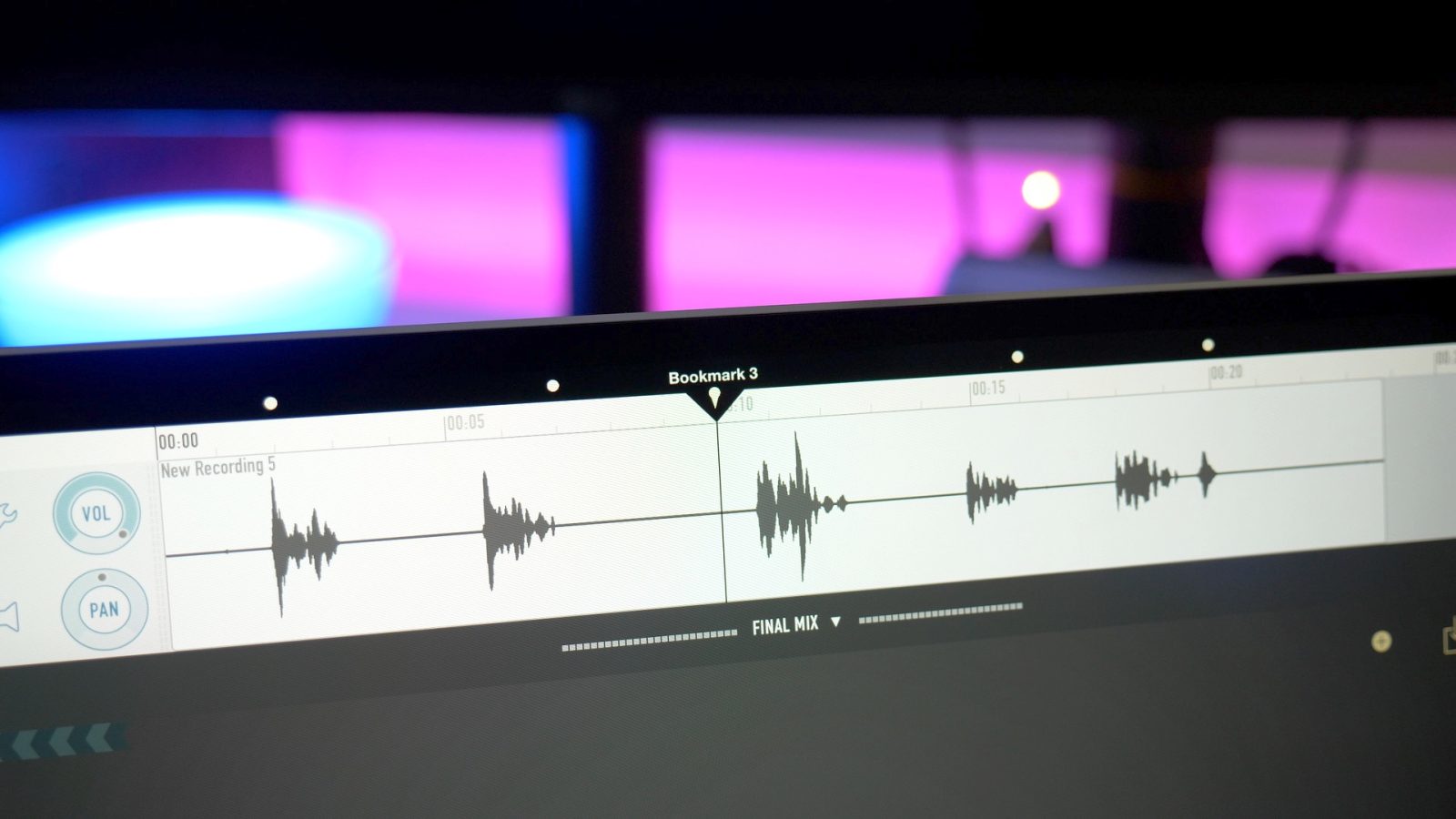
Whenever I need to record audio on my iPad or iPhone, Ferrite Recording Studio is my go-to app of choice. This app, created by developer Wooji Juice, works for simple one-off recordings like voice memos, but can also function as a flexible and powerful multi-track audio editor. Have a look at this week’s Friday 5 as we peer into the features that make Ferrite (free w/available in-app purchases) worth adding to your audio editing repertoire.
Quick and easy recording
One of the great things about Ferrite is that it lets you quickly begin a new recording as soon as you open it. The app displays an audio meter to represent current input recording levels, and it allows you to adjust gain for the microphone right within the recording interface.
Of course, Ferrite also lets users pair an iOS-compatible microphone, like Shure’s excellent MV88 Lightning Microphone (hands-on walkthrough), which results in significantly higher quality recordings.
Ferrite is particularly great for recording voiceovers. For instance, I use it for some of the voiceover work that I do for videos edited in LumaFusion.
Video walkthrough
Subscribe to 9to5Mac on YouTube for more hands-on videos
Bookmarks
While in the middle of a recording, you’ll notice a large Bookmark button at the bottom of the interface. If you like to record multiple takes, bookmarks can save you time by allowing you to mark where each new take is about to begin.
Once the recording is completed, you can venture into the inspector to view and rename individual bookmarks. While on the multi-track editor, you can quickly jump between those bookmarks to save you time in post production.

Create multi-track projects
Each standalone recording performed in Ferrite is saved as its own separate recording, but you can easily build a multi-track editing project out of that recording by tapping the edit button.
Additional tracks can be added to a multi-track project by creating new recordings within Ferrite, or by importing audio from external sources. Once a track is on the timeline, you can use gestures to move, play, pause, split, zoom, select and delete.
Editing audio, effects, and automation
Understand that Ferrite Recording Studio is not so much a multi-track recording studio as it is an editing suite for multi-track audio. It’s thus great for performing post-production edits on things like voiceovers, podcasts, monologues, etc.
Included in the app’s multi-track editor is the ability to implement fades and automatic cross fades on overlapping tracks, quickly trimming tracks using split commands and drag handles, adjusting volume and panning, and even using more advanced tools like ducking and strip silence, which can prove to be helpful for a variety of recording types, especially podcasts.

Along with the basic gesture support that the app employs, users will find a customizable tool bar at the bottom of the interface that can be used to quickly make selections, crop away fades, split, join, jump to time, share, and more. There’s even a ripple delete option when deleting clips to help speed up your workflow.

Effects are a good way to sweeten the sound of a recording, and Ferrite features quite a few built-in. The FX Library contains a compressor, high and low pass filters, noise gate, and other useful effects that can be customized to your liking. There’s also automation that can be applied to the individual components of a particular effect, along with track volume and panning.
Exporting
Ferrite allows users to record audio in either a lossy or lossless format, and the same goes for exporting audio and audio projects. Users can save final compositions as high quality WAV or CAF files for the best quality, or use lossy AAC exports to save space. Users also have the option of exporting as a stereo recording, or mixing down to a mono recording.
Conclusion
If you regularly edit voiceovers or podcasts, then you should definitely give Ferrite Recording Studio a try. It’s generally not the type of app that you’d want to use to record multi-track music compositions, but it’s an extremely deep editor for voice work.
You can download Ferrite free of charge from the App Store, although some features, like effects and automation, require an in-app purchase.
If you’re looking for another creative-oriented app, then be sure to watch last week’s episode of Friday 5 where we stepped through several key features of Serif’s Affinity Photo for iPad.
FTC: We use income earning auto affiliate links. More.







Comments